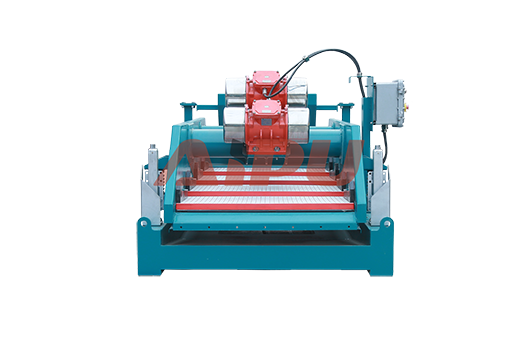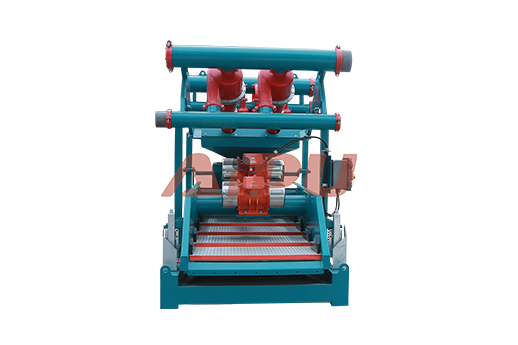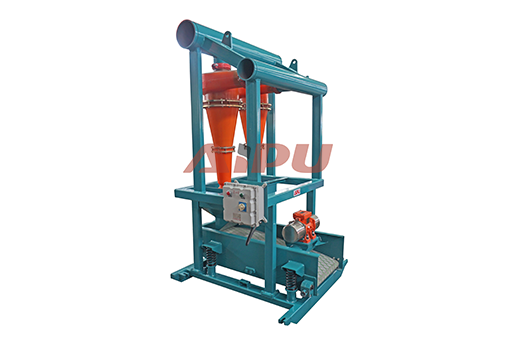How Solids Control System Elevates Drilling Performance
In the dynamic landscape of drilling operations, the need for efficiency and cost - effectiveness has never been greater. A customized solids control system emerges as a game - changer, revolutionizing the way drilling is conducted. This article delves into the key aspects of how such a system can revamp drilling operations.
Understanding the Basics of Solids Control
Solids control is a crucial process in drilling that involves separating unwanted solids from the drilling fluid. The drilling fluid, also known as mud, plays multiple roles, including cooling the drill bit, carrying cuttings to the surface, and maintaining wellbore stability. However, if the solids are not properly removed, they can cause a range of problems. High levels of solids can increase the viscosity of the drilling fluid, leading to poor circulation, increased wear on equipment, and reduced drilling rates. A customized solids control system is designed to address these issues by precisely tailoring the separation process according to the specific characteristics of the drilling site and the type of drilling fluid used.
Benefits of a Customized System
One of the primary benefits of a customized solids control system is improved efficiency. By optimizing the separation process, the system can remove a higher percentage of solids, ensuring that the drilling fluid remains in optimal condition. This leads to faster drilling rates, as the drill bit can operate more smoothly without the interference of excessive solids. Additionally, a customized system can reduce equipment wear and tear. With cleaner drilling fluid, pumps, valves, and other components are subjected to less stress, resulting in longer equipment lifespans and lower maintenance costs. Another significant advantage is environmental friendliness. By properly controlling solids, the amount of waste generated during drilling can be minimized, reducing the environmental impact of the operation.
Designing a Customized Solids Control System
Designing a customized solids control system requires a comprehensive understanding of the drilling operation. Factors such as the depth of the well, the type of formation being drilled, and the properties of the drilling fluid must be taken into account. First, a detailed analysis of the drilling site is conducted to determine the size and type of solids that need to be removed. Based on this analysis, the appropriate separation equipment, such as shale shakers, hydrocyclones, and centrifuges, is selected. The system is then configured to ensure seamless integration with the existing drilling equipment. Customization also involves programming the system to adapt to changing drilling conditions, such as variations in the flow rate of the drilling fluid or the concentration of solids.
Implementation and Monitoring
Once the customized solids control system is designed, it is time for implementation. The installation process must be carried out carefully to ensure that all components are properly connected and functioning. After installation, a thorough testing phase is conducted to verify the system's performance. Continuous monitoring is essential to ensure that the system operates at peak efficiency. Real - time data on the solids content of the drilling fluid, the performance of the separation equipment, and other relevant parameters are collected and analyzed. If any issues are detected, adjustments can be made promptly to optimize the system's operation and maintain the overall efficiency of the drilling process.
In conclusion, a customized solids control system offers a comprehensive solution for revamping drilling operations. By understanding the basics, leveraging the benefits, designing a tailored system, and implementing and monitoring it effectively, drilling companies can achieve significant improvements in efficiency, cost - savings, and environmental sustainability.

Understanding the Basics of Solids Control
Solids control is a crucial process in drilling that involves separating unwanted solids from the drilling fluid. The drilling fluid, also known as mud, plays multiple roles, including cooling the drill bit, carrying cuttings to the surface, and maintaining wellbore stability. However, if the solids are not properly removed, they can cause a range of problems. High levels of solids can increase the viscosity of the drilling fluid, leading to poor circulation, increased wear on equipment, and reduced drilling rates. A customized solids control system is designed to address these issues by precisely tailoring the separation process according to the specific characteristics of the drilling site and the type of drilling fluid used.
Benefits of a Customized System
One of the primary benefits of a customized solids control system is improved efficiency. By optimizing the separation process, the system can remove a higher percentage of solids, ensuring that the drilling fluid remains in optimal condition. This leads to faster drilling rates, as the drill bit can operate more smoothly without the interference of excessive solids. Additionally, a customized system can reduce equipment wear and tear. With cleaner drilling fluid, pumps, valves, and other components are subjected to less stress, resulting in longer equipment lifespans and lower maintenance costs. Another significant advantage is environmental friendliness. By properly controlling solids, the amount of waste generated during drilling can be minimized, reducing the environmental impact of the operation.
Designing a Customized Solids Control System
Designing a customized solids control system requires a comprehensive understanding of the drilling operation. Factors such as the depth of the well, the type of formation being drilled, and the properties of the drilling fluid must be taken into account. First, a detailed analysis of the drilling site is conducted to determine the size and type of solids that need to be removed. Based on this analysis, the appropriate separation equipment, such as shale shakers, hydrocyclones, and centrifuges, is selected. The system is then configured to ensure seamless integration with the existing drilling equipment. Customization also involves programming the system to adapt to changing drilling conditions, such as variations in the flow rate of the drilling fluid or the concentration of solids.
Implementation and Monitoring
Once the customized solids control system is designed, it is time for implementation. The installation process must be carried out carefully to ensure that all components are properly connected and functioning. After installation, a thorough testing phase is conducted to verify the system's performance. Continuous monitoring is essential to ensure that the system operates at peak efficiency. Real - time data on the solids content of the drilling fluid, the performance of the separation equipment, and other relevant parameters are collected and analyzed. If any issues are detected, adjustments can be made promptly to optimize the system's operation and maintain the overall efficiency of the drilling process.
In conclusion, a customized solids control system offers a comprehensive solution for revamping drilling operations. By understanding the basics, leveraging the benefits, designing a tailored system, and implementing and monitoring it effectively, drilling companies can achieve significant improvements in efficiency, cost - savings, and environmental sustainability.








